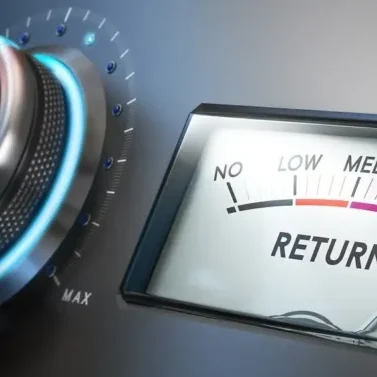Can a FedEx Route Carve-Out Acquisition be Financed?
Summary: FedEx Pick and Delivery (FedEx P&D) route carve-out sales are often listed through business brokers. While popular, these acquisitions are notoriously difficult to execute. Furthermore, they are difficult to finance and often require buyers willing to pay "all cash" for the business. In this article, we explore:
- What is a FedEx P & D route carve-out?
- Why are owners willing to sell a portion of their business?
- Are FedEx P&D route carve-outs good opportunities?
- Can these opportunities be financed?
- Why is getting financing so difficult?
- Buyer considerations
1. What is a FedEx route carve-out?
A route carve-out happens when an owner "carves out" a portion of their business and sells it. Since carve-outs get only a portion of the seller's business, they are not usually turnkey operations. Carve-outs are often missing important resources – such as equipment or key employees – that stay with the seller. Consequently, the buyer must subsequently add these resources to operate the company successfully.
2. Why would owners sell a portion of their company?
Determining the true reason why someone is selling only part of their business is difficult. Here are some of the explanations clients and/or their brokers have given us. Keep in mind that we have no way to corroborate these facts. Therefore, these explanations are based only on our experience financing acquisitions in this marketplace.
a) Their business got too big
A common reason for carve-outs is that FedEx can limit the size of a provider in a terminal. A growing provider that reaches a specific size may trigger a potential action from FedEx. Obviously, this is something FedEx route owners want to avoid. Consequently, they sell a portion of their business to scale it down and stay in compliance.
b) They need to raise funds for the business
We have heard that sellers want to sell part of the business to raise funds for a specific purpose. This purpose could be business-related or purely personal.
c) They believe smaller businesses are easier to sell
We have seen situations where a broker claims that breaking up a larger business into smaller parts is better for their seller. The broker's reasoning is that a smaller company can attract a larger number of potential buyers, thus increasing demand. We are unsure of the validity of the reasoning. As we will see in the next section, a carve-out also restricts the buyer's ability to get financing and increases the complexity of the transaction. This could eliminate any potential benefits of breaking up the business.
3. Are FedEx route carve-outs good acquisition targets?
There is no simple answer to this question since every business is different. Some carve-outs may be great opportunities, especially for the right buyer. However, we question whether they are the right opportunity for new buyers with minimal FedEx operational experience. There are too many uncertainties and things that can go wrong.
a) Is the carve-out actually profitable?
The first thing you want to know about a potential business acquisition is if it's profitable. Obviously, most buyers don't want to buy an unprofitable business.
To determine profitability, you'll have to review the company's financial statements. This step is where you run into problems. Most sellers won't be able to provide you with accurate financial statements. Instead, sellers will provide reports with financial projections based on estimates and forecasts. Note that a forecast is simply a well-educated guess.
Most sellers have accurate information for their whole business. However, most sellers don't have the resources or ability to break out the expense details specific to the carved-out portion of the business. This task would require complex and time-consuming accounting, often outside the scope of what most small businesses can do. Consequently, the best that sellers can provide you are estimates based on their experience. Unfortunately, this is where these transactions run into problems. Let's look at an example to understand why.
b) A carve-out example
Let's look at a hypothetical carve-out scenario. Keep in mind that we use these numbers to illustrate a point. They don't represent actual numbers from a real business. Let's say the FedEx business has the following resources:
- 17 step vans
- 17 drivers
- One bookkeeper
- One manager
Down the road, the owner decides to sell a carve-out that represents 30% of the business. They will keep 70% while selling the remaining 30%. As a potential buyer performing their due diligence, you request financial statements.
To build financial statements, sellers must estimate the cost of running the carve-out as a standalone business. Let's assume the company uses all resources evenly, which is a big assumption. We'll use 30% of the numbers in the previous list to build the new business. The seller concludes the new business needs:
- 5.1 step vans
- 5.1 divers
- 0.3 of a bookkeeper
- 0.3 of a manager
Now you run into some problems. Your new business cannot use 5.1 vans, 5.1 drivers, 30% of a manager, and so on. You have to forecast the actual resources you need to operate the business. Here are some potential issues you need to handle:
- Can the business use five vans, or will it need six?
- Will you need to find a part-time driver, or is 5 drivers enough?
- Can a part-time bookkeeper handle the workload?
- Can the business still support a full-time manager?
- If the business can't afford a full-time manager, are you experienced enough managing a FedEx P&D route to step in?
- Can the business support these expenses and provide a worthwhile profit?
Your answer to each question affects the results of the financial forecasts. If a few things don't perform as expected, the business could go sideways. Ultimately, you hope your assumptions are accurate. You will never know if the business will be profitable until you start operating the company in the real world.
One last point. This example assumes that revenues remain steady. Consequently, the volume you get and the rates you get paid remain unchanged. This assumption was made for simplicity, but it's probably not realistic. Revenue fluctuations could have a substantial impact on the company's profitability.
4. Can carve-out opportunities be financed?
In our experience, getting financing for a FedEx carve-out is nearly impossible. Most financing companies – including us – won't do them. Consequently, your acquisition funding options may be limited to using seller financing, getting private funding, or making an "all-cash" acquisition. To understand why you can't get funding, let's look at how FedEx route acquisitions are commonly financed.
a) How are FedEx acquisitions usually financed?
Most buyers want to finance their FedEx route purchase while putting the least amount of cash possible into the transaction. Few buyers can afford to buy a business in cash. Furthermore, using financing allows them to buy a larger business.
An acquisition that is financed mostly through debt is called a leveraged buyout (LBO). LBO's allow you to finance up to 90% of the transaction. The remaining 10%, called an equity injection, has to come from the buyer's resources. Many small business acquisitions are structured this way.
An LBO allows you to control a large business with a relatively small investment. Thanks to the level of debt, if things go well, the buyer can earn high returns. However, LBOs can be a double-edged sword. The equity cushion is so slim that it could be wiped out if things don't go as planned. Learn more about LBO advantages and disadvantages.
5. Why is getting financing so difficult?
Lenders don't usually finance carve-outs because the risk of losing money is too high. As we saw in the previous section, the parties to the transaction cannot provide accurate financial reports. Without these reports, lenders can't adequately evaluate the risk of the transaction. Unfortunately, a lender can't finance 90% of a transaction whose profits are uncertain and whose future remains unpredictable.
The 10% cushion from the buyer's equity injection does not offer the lender sufficient protection against possible losses. In fact, no amount of owner's equity to be used as a cushion could likely ever satisfy a lender. This is because the acquisition could potentially lose money, eliminating a substantial portion of value.
6. Buyer considerations
We think FedEx carve-outs are complicated enough that buyers with no experience running a FedEx business should consider other opportunities with less risk. Regardless of your level of experience, consider working with seasoned experts if you choose to acquire a carve-out.
You will need professional help to evaluate these opportunities and build accurate financial models. If you need an expert, your CPA is an excellent person to consult. Lastly, expect to invest a substantial amount of time and resources performing due diligence. This effort will provide you with a greater chance of success.
Need to finance a FedEx route acquisition?
We do not finance carve-outs, but we do finance regular acquisitions. The first step to work with us is to submit this form. Once we review it, one of our associates will contact you to discuss the specific details of your acquisition.
Editor's note:
This information should not be considered legal or financial advice. Given the complexity of business acquisitions, this document is not guaranteed to be 100% accurate or cover every potential option. However, we make every effort to provide you with the best information. If you have comments, suggestions, or improvements, contact us via LinkedIn. Also, we are not associated with the FedEx brand in any way.






